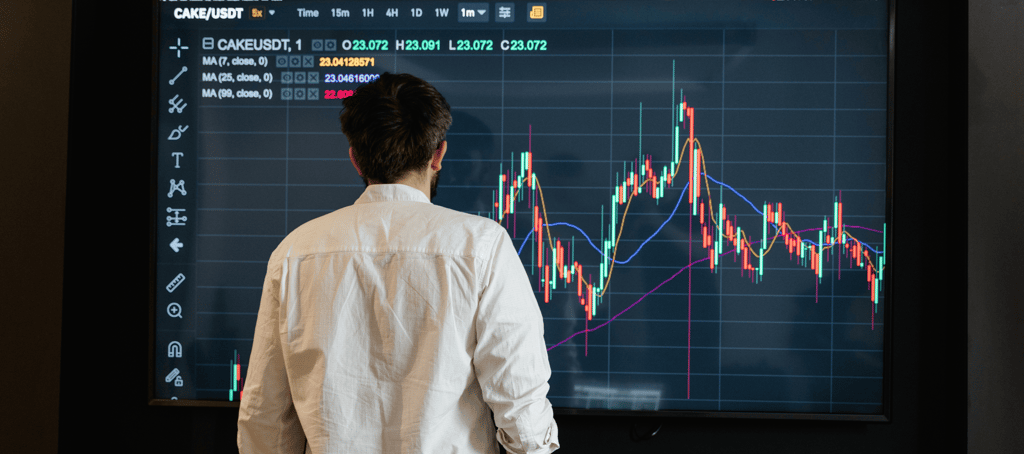Mastering Moving Averages in Trading: A Complete Beginner’s Guide


Introduction
In the world of technical analysis, moving averages are among the most used and respected tools. They are simple, powerful, and incredibly effective in helping traders make informed decisions. Whether you’re new to trading or looking to solidify your foundation, this guide will teach you everything you need to know about moving averages—what they are, how they work, how to use them, and which strategies traders rely on to make real decisions in real markets.
What Is a Moving Average?
A moving average (MA) is a technical indicator that smooths out past price data to help identify the direction of the trend. It does so by calculating the average of an asset’s price over a specific period and continuously updating it as new data comes in. This helps reduce the noise from random price spikes and gives a clearer picture of the market direction.
For example:
A 20-day moving average adds up the closing prices of the last 20 days and divides by 20.
Each new day, the oldest data point drops off, and the newest one is added—hence the term moving average.
Why Are Moving Averages Important in Trading?
Moving averages provide several key benefits:
Trend identification: Is the market going up, down, or sideways?
Support and resistance levels: Prices often bounce off MAs.
Trade signals: MAs can be used to generate entry and exit signals.
Filtering noise: Helps reduce price volatility and smooths the data.
They are essential tools for trend-following strategies and are also used in mean-reversion techniques.
Types of Moving Averages
There are several types of moving averages, but the most commonly used are:
1.Simple Moving Average (SMA)
The Simple Moving Average is the most basic form. It calculates the average price over a specific period without giving any extra weight to newer prices.
Formula:
SMA = (P1 + P2 + P3 + … + Pn) / n
Where P is the price and n is the number of periods.
Example: A 10-day SMA adds up the closing prices of the last 10 days and divides by 10.
Pros: Easy to understand and use
Cons: Reacts slowly to sudden price changes
2.Exponential Moving Average (EMA)
The Exponential Moving Average gives more weight to recent prices, making it more responsive to current market activity.
This makes it a favorite among short-term traders.
Pros: Reacts faster to price changes
Cons: May produce more false signals in choppy markets
3.Weighted Moving Average (WMA)
Similar to the EMA, the Weighted Moving Average assigns more weight to recent prices, but with a slightly different calculation method. WMA is less commonly used than SMA and EMA, but can still be effective in specific scenarios.
How to Use Moving Averages in Trading
Moving averages can be applied in various ways depending on your trading style and goals.
1.Trend Direction
The simplest way to use a moving average is to identify the trend:
Price above the MA = Uptrend
Price below the MA = Downtrend
Use longer-term MAs (50, 100, 200) for trend analysis, and shorter MAs (9, 20) for entries and exits.
2.Support and Resistance
Moving averages often act as dynamic support and resistance levels:
In an uptrend, the price may bounce off the 20 EMA or 50 SMA.
In a downtrend, these same MAs may act as resistance.
Traders use these levels to buy dips in an uptrend or sell rallies in a downtrend.
3.Crossover Strategies
One of the most popular moving average strategies is the crossover method.
a. Golden Cross (Bullish Signal)
Occurs when a shorter-term MA crosses above a longer-term MA.
Example: 50 SMA crossing above 200 SMA
b. Death Cross (Bearish Signal)
Occurs when a shorter-term MA crosses below a longer-term MA.
Example: 50 SMA crossing below 200 SMA. These crossovers indicate potential trend reversals and can be used as trade signals.
Popular Moving Average Strategies
1.Single Moving Average Strategy
Use a single moving average to determine trend direction. Trade in the direction of the trend:
Buy when the price is above the MA and pullbacks occur.
Sell when the price is below the MA and rallies occur.
2.Dual Moving Average Crossover
Use two MAs:
Short-term (e.g., 20 EMA)
Long-term (e.g., 50 EMA)
Buy when the 20 EMA crosses above the 50 EMA.
Sell when the 20 EMA crosses below the 50 EMA.
3.Triple Moving Average System
Use three MAs: short, medium, and long-term.
Short-term: 10 EMA
Medium-term: 50 EMA
Long-term: 200 EMA
Only trade when all three are aligned (e.g., 10 > 50 > 200 for buys).
4.Moving Average with RSI or MACD
Combine moving averages with other indicators like:
RSI (Relative Strength Index) for overbought/oversold confirmation
MACD (Moving Average Convergence Divergence) for momentum confirmation
This reduces false signals and increases accuracy.
Real-Life Example
Let’s say you’re trading the EUR/USD pair:
You plot the 20 EMA and the 50 SMA on a 1-hour chart.
The 20 EMA crosses above the 50 SMA, and price is trading above both.
RSI is not overbought.
You decide to enter a long trade, placing your stop-loss just below the 50 SMA and targeting the next resistance level. A few hours later, the price moves in your favor and hits your target. This is a simple yet effective use of moving averages combined with confirmation indicators.
Limitations of Moving Averages
Despite their usefulness, moving averages have limitations:
1.Lagging Nature
Moving averages are based on past prices. They lag behind the market and may not predict future price moves.
2.False Signals in Choppy Markets
In sideways or range-bound markets, MAs can generate whipsaws—frequent signals that result in losses.
3.Not Standalone
No indicator, including MAs, should be used in isolation. Always combine with price action and other tools for better results.
Tips for Using Moving Averages Effectively
Use shorter MAs (like 9 or 20 EMA) for entries and exits.
Use longer MAs (like 100 or 200 SMA) to identify the main trend.
In a strong trend, use MAs as trailing stops to lock in profits.
Combine with volume, RSI, MACD, or trend lines for better confirmation.
Backtest your strategy on different instruments and timeframes.
Conclusion
Moving averages are an essential part of any trader’s toolkit. They help you identify trends, provide key levels for entries and exits, and offer powerful signals when used correctly.
Whether you’re day trading, swing trading, or investing long-term, understanding how to use moving averages can significantly improve your decision-making and overall results.
Final Takeaways:
Choose the type (SMA or EMA) and period based on your style.
Use MAs to follow trends, not to fight them.
Combine with confirmation tools to avoid false signals.
Practice and backtest to gain confidence and clarity.
With experience, moving averages will become second nature, and your trading will be all the better for it.


